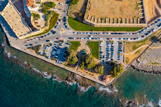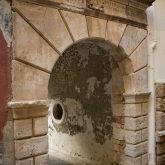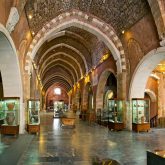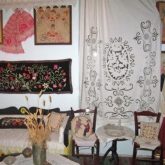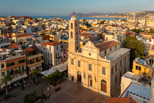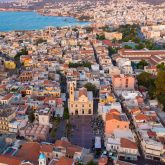They are perhaps the most picturesque neighborhoods of the Old Town of Chania city, filled with Venetian legacy, history, mix of religions, colors, nostalgia, scents and flavors. It is perhaps the richest tour in terms of sightseeing and historical landmarks.
Following the occupation of the island by the Turks in 1645, the Greek Christians and Greek Jews were reallocated to the western side of the Old Town, adjacent to the Firkas Fortress, while the Turks occupied the eastern quarters. The Christians lived in the Topanas area (the name meaning bombs for the canons as a reference to the construction of bombs for the Firkas Fortress) with Theotokopoulou St. as its high street and filled with Venetian residences. At the end of Theotokopoulou St., and turning east, the Jewish quarter is enclosed within a circumference defined by Halidon St., Zabeliou St., Skoufon St and Portou St. Kondylaki St. was the most commercial street and it is where the most prominent residents of the Jewish community lived, hence the street is wider for carriages to be able to pass by.
The Jewish community settled on the island about 2.300 years ago and co-existed harmoniously with the Cretan population for centuries on end. The Etz Hayyim Synagogue was created during the Venetian era, by taking the place of a Catholic church. In the neighborhood there was also the Sephardi Synagogue Beth Shalom which was completely destroyed during the first German bombings. The Jewish community was strong and lasting up until the 19th century when Jews started emigrating due to the ongoing political power struggle between the Great Forces of Europe and the Ottoman Empire over the unification of Crete with mainland Greece. The only surviving community left on the island at the time of the German invasion was still living at the Jewish quarter of Chania, counting around 300 members. Right before the end of WWII, in May of 1944 the entire community is arrested, their belongings thrown over the windows pilling in the streets, and after spending time imprisoned, they were sent to Herakleion and then shipped to Piraeus port of Athens. Somewhere half the way of their final journey, a British submarine, torpedoes the ship, sinking it and whipping out the entire Cretan-Jewish community. The restored Synagogue Etz Hanyyim, mainly funded by foreign trust funds that lobbied for including the Synagogue in the list of 100 most endangered monuments of international cultural concern in 1996, is the reminiscent of the Jewish presence and contribution to life in Chania city. It is definitely worth a visit and the exterior courtyards are very inviting leading you to the interior typical to the tradition of Romaniote Jewish communities in Greece.


